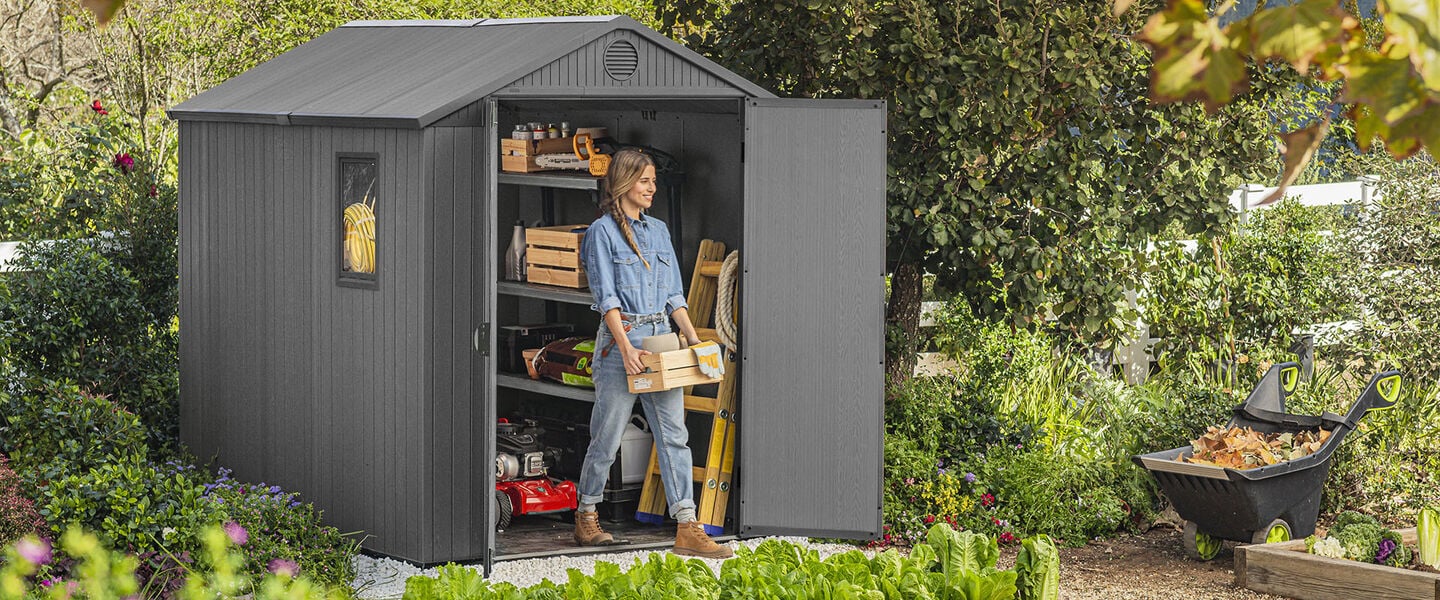
How To Turn a Shed Into a Workshop
When it comes to sheds most people might think of storing items. Indeed, sheds are perfect for storing items, but over the years, people have been getting more and more creative about how they use their sheds. There are sheds, playhouse sheds, chicken coop sheds and even sheds as workshops. You might be thinking about turning your shed into a workshop, and if this is the case, you’ll need to consider a few things before you get started. Here’s why turning a shed into a workshop is a great idea, and what you need to turn it into one!
Benefits of Turning a Shed into a Workshop
There are so many reasons why a shed as a workshop makes sense. Perhaps the biggest reason is that it will give you a designated space for your tools and projects. This means more space in your garage and home for storing other items. So, the holiday decor no longer needs to be stored in the hall closet, and the bikes no longer end up all over the grass. You’ll have space for these items and your tools. More than anything, though, having a designated workbench is important for hobbyists and those that need to work on projects around the house. However, in order to actually change a shed into a real workshop, you’ll need to take care of a few things first.
Creating a Plan for Your Shed
To start, put together a workshop plan. Think about what your ideal workshop would look like, and consider the tools you’d use as well as the projects you’d plan to work on. All of these things will help you decide on shed size, if you’ll need electricity, how big of a workbench you’ll need and all of the other ins and outs of your workshop. It might also help you cut down on costs a bit so you don’t have to buy and return multiple things because they don’t fit or work in your workshop space.
Finding the Right Shed
Unless you already have an empty shed in your yard, the first thing you’ll need to do is shop for a shed. You’ll want to consider the following things as you research and shop:
- Material
- Durability
- Insulation
- Look and Feel
- Style of Shed
- Ventilation
You’ll want to carefully consider the material your shed is made from, and how durable that material is. The most popular materials include wood, metal and resin. They’re all pretty decent options until you realize that the wood and metal require a lot of maintenance or else they can crack, rot, rust or peel. Resin doesn’t do any of those things; it’s low maintenance, has a gorgeous wood-like look and comes in so many styles. In addition, most sheds don’t come with any kind of insulation, so you’ll want to read up on insulating a shed.
Keter storage sheds have been manufactured with you in mind. Many of our outdoor sheds include features such as double doors, windows, ventilation, skylights and even customizable walls. So, finding a shed that can be easily converted into a workshop while also being beautiful and functional is key. If you’d like to learn more about the most popular shed types on the market, we have an in-depth blog about the pros and cons of each shed material type.
Lighting and Electricity
If you’re going to be using lights and electric tools in your workshop, you’ll need electricity. Keep in mind that sheds do not come with electricity. So, you’ll need to hire an electrician to safely wire in lights for seeing better and plugs for power tools.
If you don’t have power tools, you can always buy puck lights on many websites and put them inside of light fixtures—then make sure they’re secured to the wall. You’ll have a few makeshift lights that are battery-operated, but they can often be controlled with a remote and you won’t need the electrician to install them.
A Workbench
One of the biggest things you’ll need for your shed-turned-workshop is a workbench. This might be something you build yourself, or maybe you’ll buy a surface to use as a workbench. Having a good sturdy workbench is really critical to having your own workshop.
So, if you don’t have one, start figuring that out ASAP. It also might be good to have a few folding tables on hand in case you need a little extra space while you’re working. Once you’re done with them, you can always fold them up and use them for other events, like the neighborhood barbecue your wife arranged to have at your home.
Shelving or Cabinets for Your Tools
You might be able to build a beautiful shed workshop, but it won’t stay organized without cabinets or shelving for all of your tools. So, once you have the shed, lighting, insulation and a workbench, you’ll definitely need cabinetry.
Our favorite is the XL Pro Storage Cabinet from Keter. It has durable shelves that can hold up to 99 pounds per shelf! Since it’s a cabinet too, it’s a great way to look organized and polished since you can place items on the shelving and then close the cabinet. Shed shelving and accessories will help your workshop look and feel more organized while also keeping your tools safer.
Locking the Shed
If you’re keeping expensive tools and equipment in your shed, you might want to utilize some security measures. Adding a simple item like a padlock to the door or something more complex like a camera watching the shed at all times can make a big difference in the safety of your workshop. So, just keep it in mind as you put together your plans.
Once you’ve created your workshop plan and figured out all of the other elements we’ve talked about above, you should be well on your way to creating the perfect shed workshop. If you’re looking for a great shed, Keter has some of the best and most low-maintenance sheds on the market. So, be sure to give them a look as you do your research.

We build in a sustainable manner.
We use innovative technologies and sustainable materials to build planet-friendly products that last a lifetime.







